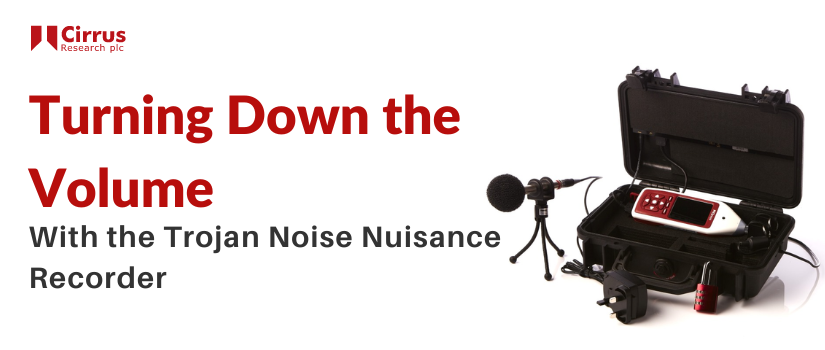Definition: An integrating sound level meter is an instrument that measures sound energy over a period of time.
Explanation: Picture a varying noise level drawn as a continuous line on a graph. This varying line represents the continuously changing sound pressure which is measured by the microphone of the sound level meter and is measured in Pascals.

When this is converted into a dB value (which makes it easier to shown on the display of a sound level meter) it is known as the Sound Pressure Level. This is where the term SPL comes from.
The area underneath the line on the graph represents the sound energy accumulated over the measurement period. By using a mathematical function known as integration, we can calculate this area and therefore calculate the sound energy.
This is what an integrating sound level meter does and this is known as the Sound Exposure (which is measured in Pa2hr). Converting this to a dB value gives us the Sound Exposure Level, often known as the SEL or LE. If this is A-weighted, it will be show as LAE.

To get an Leq value, or Equivalent Continuous Sound Level, we need to divide the sound exposure by the duration of the measurement. This averages the sound exposure over the measurement time and gives us the Leq.

In most modern sound level meters, this process is done behind the scenes, with the Leq being displayed as the primary value.
An instrument such as the Cirrus Optimus Red range will accumulate the sound exposure over the measurement period, displaying a cumulative Leq as the measurement continues as well as showing the sound exposure level as an LE (or LAE when it has been A-weighted).
Some instruments, such as the Cirrus Optimus Red and Optimus Green will also show the Sound Exposure value in Pa2hr as there are a few applications where this is still used.
By knowing the Leq value and the duration of the measurement, it is possible to calculate the Sound Exposure and Sound Exposure Levels if they are required.
A sound level meter that measures and displayed Leq is often referred to as an integrating sound level meter but the technically correct description for a this type of instrument is an integrating-averaging sound level meter.
This is because the sound energy that has been measured has been averaged over a known time period.
The previous standards for sound level meters were split into two separate parts. The first, IEC 60651, covered sound level meters without any integration. The second standard, IEC 60804, covered both integrating and integrating-averaging instruments.
The current standard for sound level meters, IEC 61672, covers instruments that can be anything from simple sound level meters that just measure the Sound Pressure Level through to Integrating-Averaging Sound Level Meters that will be capable of time averaging the sound exposure and giving an Leq value.
Where is an Integrating Sound Level Meter Used?
Almost every occupational noise standard or regulation specify noise exposure limits as integrated noise values and to measure to these standards requires the use of an Integrating Sound Level Meter of some form.
For example, the 2005 Control of Noise at Work Regulations that are in force in the UK specifies the noise exposure action values in terms of Leq and LEP,d. The OSHA regulations use Lavg and TWA to specify the noise exposure limits.
All of these are integrated noise values where the sound exposure has been time averaged over a measurement period. There are differences between these different standards but the underlying principle is the same.
What to Look for When Choosing an Integrating Sound Level Meter.
According to the 2005 Control of Noise at Work Regulations, a sound level that will be used make measurement should , a minimum, be capable of measuring:
- Equivalent Continuous Sound Pressure Level (LAeq)
- C-Weighted Peak Sound Pressure (LCPeak)
Optionally it should be capable of measuring:
- C-Weighed Leq for selection of PPE using the HML method
- Octave band Leq values for selection of PPE using the Octave Band method
And it should meet at least the requirements of Class 2 of BS EN 61672-1:2003 (the current standard for sound level meters) or Type 2 of BS EN 60804:2001 (the former standard).
As the instrument needs to measure, at a minimum, Leq, it must therefore be an integrating-averaging sound level meter.
If you are looking to meet the Noise at Work Regulations, Cirrus would recommend the CR:162C Optimus® instrument, an integrating sound level meter that meets all of the points 1-4 above as well as providing data logging and download capabilities.
Download the Noise Measurement Terminology Guide to expand your noise knowledge and make measuring noise simpler.




